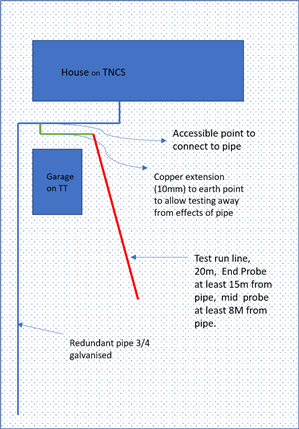I have two outbuildings going up and I am getting myself tied up in knots trying to decide exactly how I going to do it. Bit of background, this is a DIY installation under BC that will be inspected and tested by an electrician appointed by BC. I need to pass on first test as subsequent tests are expensive. I have a number of questions where the experience of the forum members will be helpful.
Q1) cables to the electrode - In selecting a most likely spot where I will get an earth rod into the ground (fairly hard chalk, overlaid with clay type soil) I am getting confused by some of the terms in the OSG. Table 4.2 ( from the 17th, awaiting for 18th) states that I can gor for a little as 2.5mm2. However, when buried, it goes to 4mm2 for mechanical damage protected, 16MM for corrosion protected and 25mm unprotected. What constitutes mechanical and corrosion protection? Does the PVC insulation on single core cable provide corrosion protection? if not, can someone point me at a cable type that has a suitable sheath layer that does? With regards to mechanical protection, I presume I am again looking at cable tiles/concrete sections or steel pipe protection? or given the danger to the person digging is less significant, would a steel flexible conduit suffice? I do appreciate that a cable break would leave a dangerous condition in the outbuilding.
Q2 - Earth rods 1 - I fear I am going to struggle to get the earth resistance down to a good figure, aiming for sub 50 ohms. I am not clear what gives me a better chance, one deep rod or two shallower rods (around 3m apart). Depth may be a real problem into the chalk (peppered with flints!). My soil conditions vary, around one installation, the soil is is fairly rich for about 30cm, then clay mixed with stones for another 30cm down to chalk. The other area is not as good, it doesn't have the soil (well 5cm or so).
Q3) What is the correct way to connect multiple rods, single cable CU - Rod1 - Rod2 etc,?
Q4 - Earth rod alternatives - I have two redundant galvanised steel pipes, 1/2 inch that are about 45m long, both are buried at a good depth and completely disconnected at each end. They run in parallel for most of their length and are about 1.5 m apart. Could I use these to supplement my rods? could I just use them without rods? if so, do you think my Inspector/tester will have any issues as long as my Ra is satisfactory.
Thanks in advance for any advice offered.
Mike


